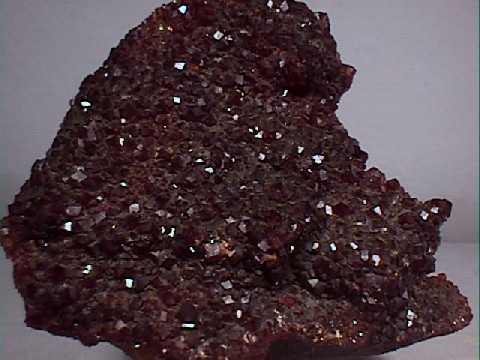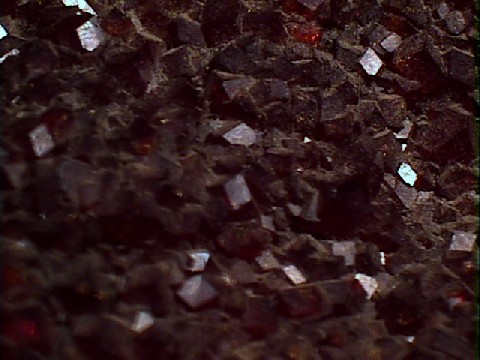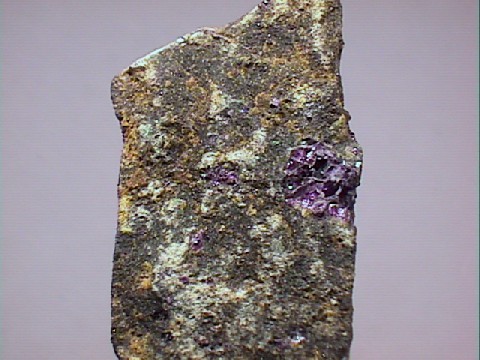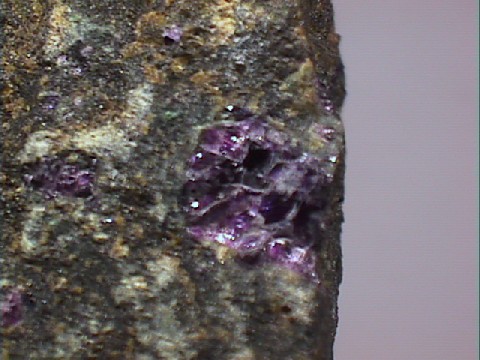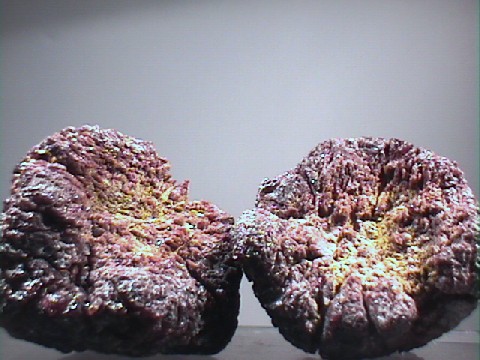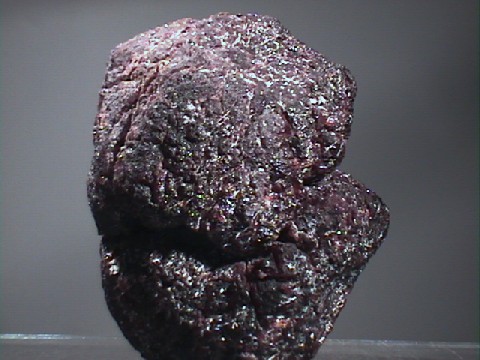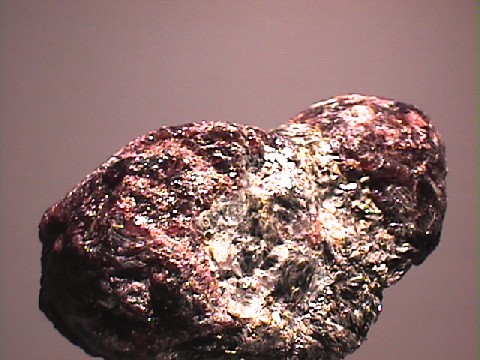 THE MINERAL PYROPE
THE MINERAL PYROPE
- Chemistry: Mg3Al2(SiO4)3, Magnesium Aluminum Silicate
- Class: Silicates
- Subclass: Nesosilicates
- Group: Garnets
- Uses: Gemstone and abrasive
Specimens
Pyrope is the only garnet that is always a shade of red. Although less common than most other garnets, pyrope is a common gemstone.
Pyrope is the only garnet whose most common source is igneous rather than metamorphic. Most pyrope comes from ultramafic igneous rocks that contain olivine and/or diamond. Metamorphic pyrope comes from the metamorphism of the igneous rocks previously mentioned or from magnesium rich rocks subjected to high grade metamorphism.
Almandine and pyrope form a series in which iron substitutes for the magnesium in pyrope. In fact, pure pyrope is unknown in nature and the various proportions are referred to as pyrope-almandine mixes.
One mixture of approximately two to one (pyrope to almandine) is a variety called rhodolite which has an attractive red-lavender color and is cut as a gemstone. Pyrope is difficult to distinguish from almandine but is usually clear and free from flaws, at least more so than almandine.
PHYSICAL CHARACTERISTICS:
- Color is red to reddish purple and sometimes a deep enough red to appear black.
- Luster is vitreous.
- Transparency crystals are transparent to translucent.
- Crystal System is isometric; 4/m bar 3 2/m
- Crystal Habits include the typical rhombic dodecahedron. also seen is the 24 sided trapezohedron. Combinations of these forms are common and sometimes the rare faces of the hexoctahedron, a 48 sided crystal habit that rarely is seen by itself, can also combine with these other forms making very attractive, complex and multifaceted crystals. Massive and granular occurrences are also common.
- Cleavage is absent.
- Fracture is conchoidal.
- Hardness is 7 - 7.5
- Specific Gravity is approximately 3.6 (above average for translucent minerals)
- Streak is white.
- Associated Minerals are olivine, serpentine, biotite, hornblende, augite,
pyroxenes and diamond. - Other Characteristics: index of refraction is 1.73
- Notable Occurrences include localities in Europe; Arizona and New Mexico, USA; South Africa and several Australian sites.
- Best Field Indicators are crystal habit, color, hardness and enviroment.

